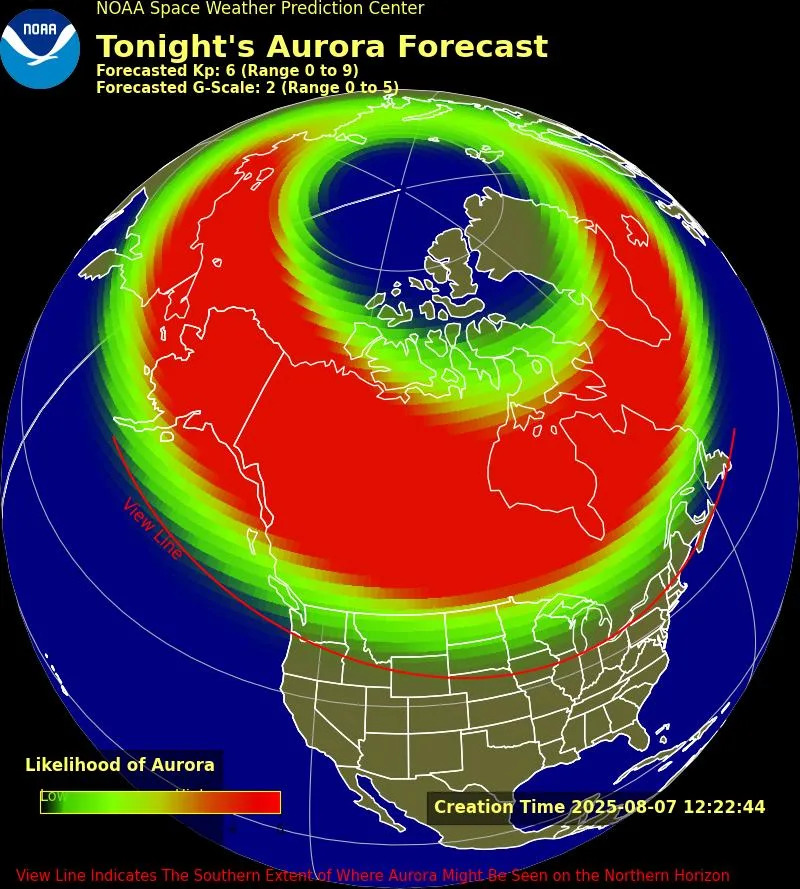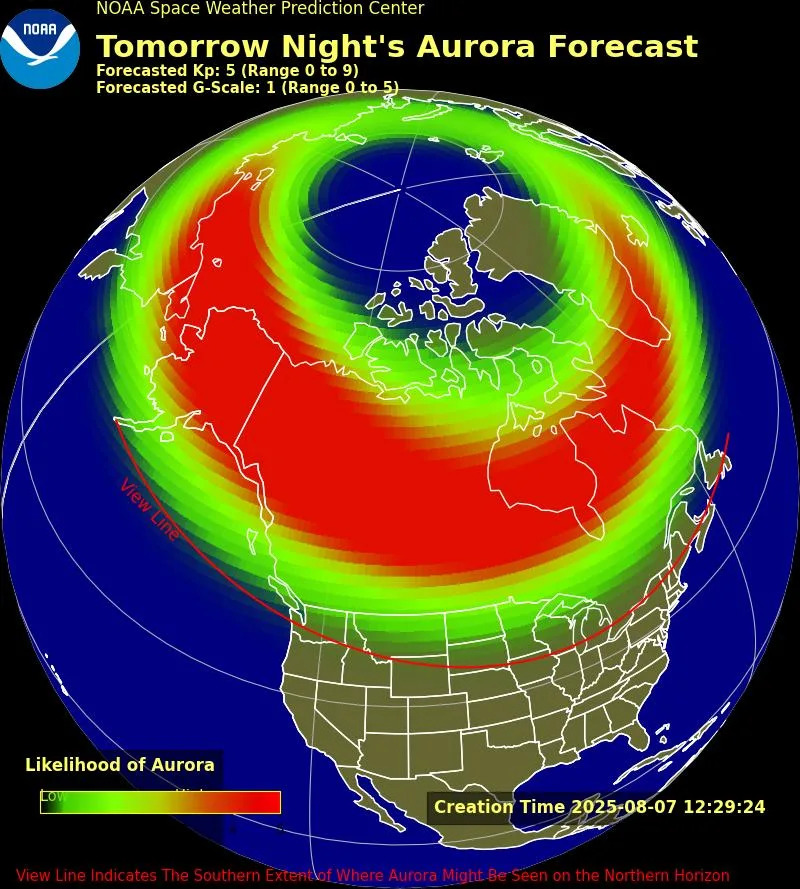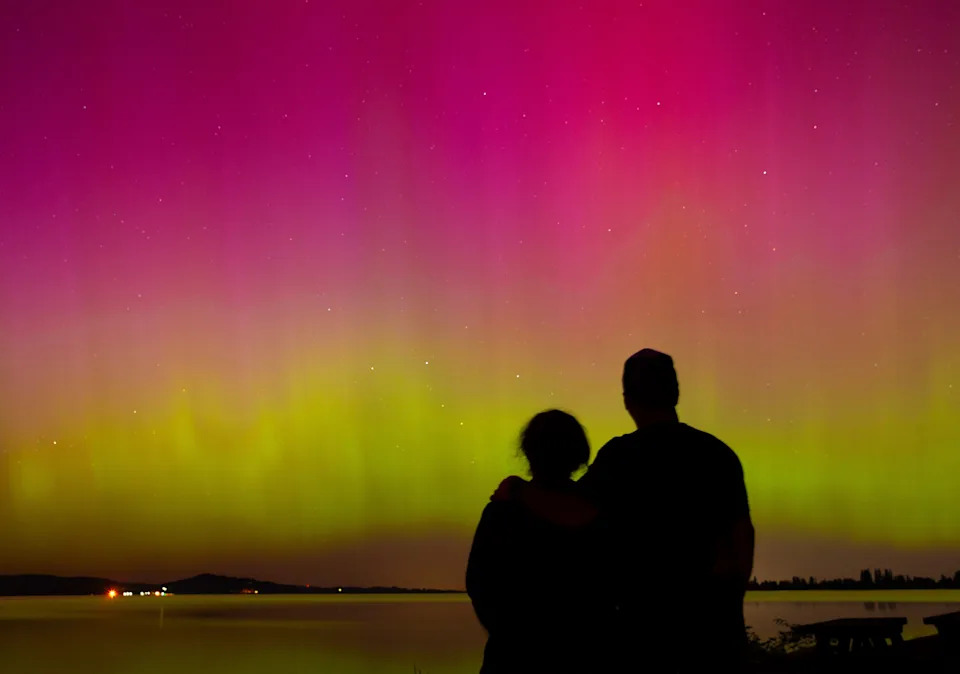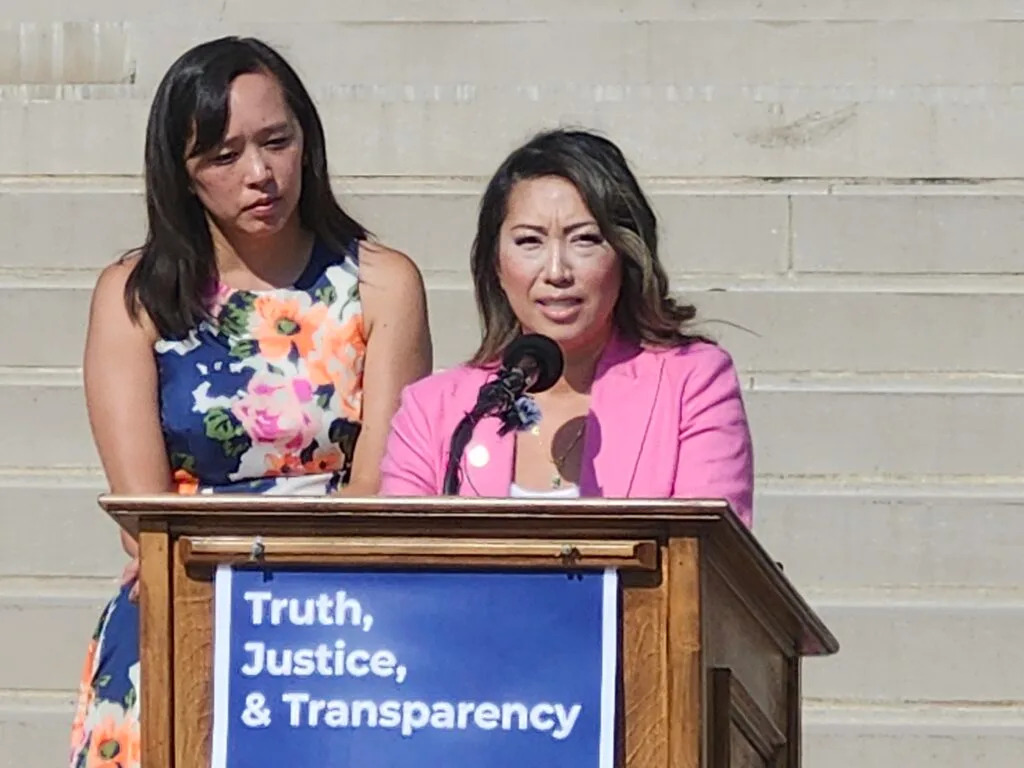When experienced stargazers in the continental United States hear the words "geomagnetic storm," likely one question comes to mind: Are we getting some northern lights?
In this case, the answer is definitive: Yes. But will they be visible from Ohio?
An explosion on the sun's outermost atmosphere of charged particles, known as a coronal mass ejection, has been hurtling toward Earth since Tuesday, Aug. 5, according to the National Oceanic and Atmospheric Administration. The agency's Space Weather Prediction Center has since been tracking the ejection, which it said has the potential to soon trigger a geomagnetic storm on Earth.
What does that mean for skywatchers? Well, the particles flowing from the sun could interact with our planet's magnetosphere in ways that trigger the northern lights, also known as the aurora borealis.
For the next two nights, the luminous green and red glow of the auroras may be more widely visible than is typical in up to 18 states in the U.S.
Here's everything to know about the solar storm, as well as where and when to see the northern lights it could produce in the U.S.
Northern Lights: The sun is spewing massive solar flares toward Earth
Where could auroras be visible? Will the northern lights be seen from Ohio?
For most of the time, auroras are best seen around the magnetic poles of the Northern and Southern hemispheres. In the U.S., Alaska is well known to have the best viewing opportunities for the northern lights.
But a geomagnetic storm tracked by the National Oceanic and Atmospheric Administration is expected to make the auroras visible farther from the poles.
The geomagnetic activity detected by NOAA's Space Weather Prediction Center has a Kp index of 6 on Thursday, Aug. 7, meaning the northern lights will be active and brighter further from the poles, according to the agency.

"At this geomagnetic activity level, it might be possible to see the aurora from the northern edge of the United States," NOAA says on its website.
In the U.S., the auroras will be visible Thursday to at least the northern parts of the following states:
Washington
Idaho
Montana
North Dakota
South Dakota
Minnesota
Wisconisn
Michigan
A thin red "viewline" representing the southern-most locations from which you may see the aurora on the northern horizon extends to:
Oregon
Wyoming
Nebraska
Iowa
Illinois
Indiana
New York
Vermont
New Hampshire
Maine
That viewline cuts across Lake Erie, meaning if the aurora is visible from Ohio, it will only be from the far north of the state, and at a distance. That may change if the geomagnetic storm comes in stronger than expected, which will push the aurora farther south.
Geomagnetic storm could produce auroras again Friday night
The geomagnetic storm will be less powerful Friday, Aug. 8, but is forecast to still be strong enough to trigger the northern lights once again across the northern U.S.

By then, though, NOAA predicts the KP index will be downgraded to a 5, which means the auroras are still bright further than usual from the poles.
"If you are in the right place, these aurora can be quite pleasing to look at," according to NOAA's description of a 5-rating on the KP scale.
When, how to see the northern lights
Even though conditions are prime for more impending aurora shows, experts have long struggled to accurately forecast exactly when and where the phenomenon will occur. Even the best predictions can accurately be made only a few days or even hours in advance.
But as a rule of thumb, if the weather is clear, the best aurora is usually visible within an hour or two of midnight, according to NOAA. And if it looks as if the northern lights will flare up near you, you should get away from cities and travel to dark locations free from light pollution so you can best see them.
The agency also maintains an aurora dashboard that should help skygazers track the phenomenon. NOAA's 30-minute aurora forecast may be particularly useful for regular updates on viewing opportunities.
Could geomagnetic storm disrupt communications on Earth?
Weaker solar activity won't be noticeable on Earth.
But a geomagnetic storm with enough energy output has the potential to disrupt satellites, communications systems, and even ground-based technologies like power grids if directed at our planet. In extreme cases, powerful solar events even pose risks to spacecraft and astronauts, NASA says.
About a year ago, in May 2024, a historically powerful geomagnetic storm was responsible for some reports of power grid irregularities and interference with GPS signals, even farming equipment. On the bright side, it also unleashed spectacular views of the northern lights in parts of the country where auroras are not often visible.
In this case, a rapid, intense flash of electromagnetic energy ranks as a G1-G2 on NOAA's scale, indicating a minor-moderate geomagnetic storm that could cause "manageable effects to some technological infrastructure," the agency stated.
A moderate geomagnetic storm is also strong enough to unleash views of the northern lights, also known as auroras, in some northern and upper Midwest states.
What are the northern lights?

The auroras are a natural light display in Earth's sky that are famously best seen in high-latitude regions of the Northern and Southern hemispheres.
The phenomenon happens when electrically charged particles from space enter Earth's atmosphere and collide with molecules and gases like oxygen and nitrogen, causing the atmospheric particles to gain energy. To return to their normal state, the particles release that energy in the form of light, according to the University of Alaska at Fairbanks Geophysical Institute website, which tracks the phenomenon.
As auroras form, Earth's magnetic field redirects the particles toward the poles through a process that produces a stunning display of rays, spirals and flickers that have fascinated humans for millennia. Whether hues of green, red, blue and even pink dance about in the sky depends on the altitude where the collisions occur, as well as the composition and density of the atmosphere at the time.
Eric Lagatta is the Space Connect reporter for the USA TODAY Network. Reach him at [email protected]
This article originally appeared on USA TODAY: Solar activity may trigger northern lights in 18 states. Is Ohio one?








Comments